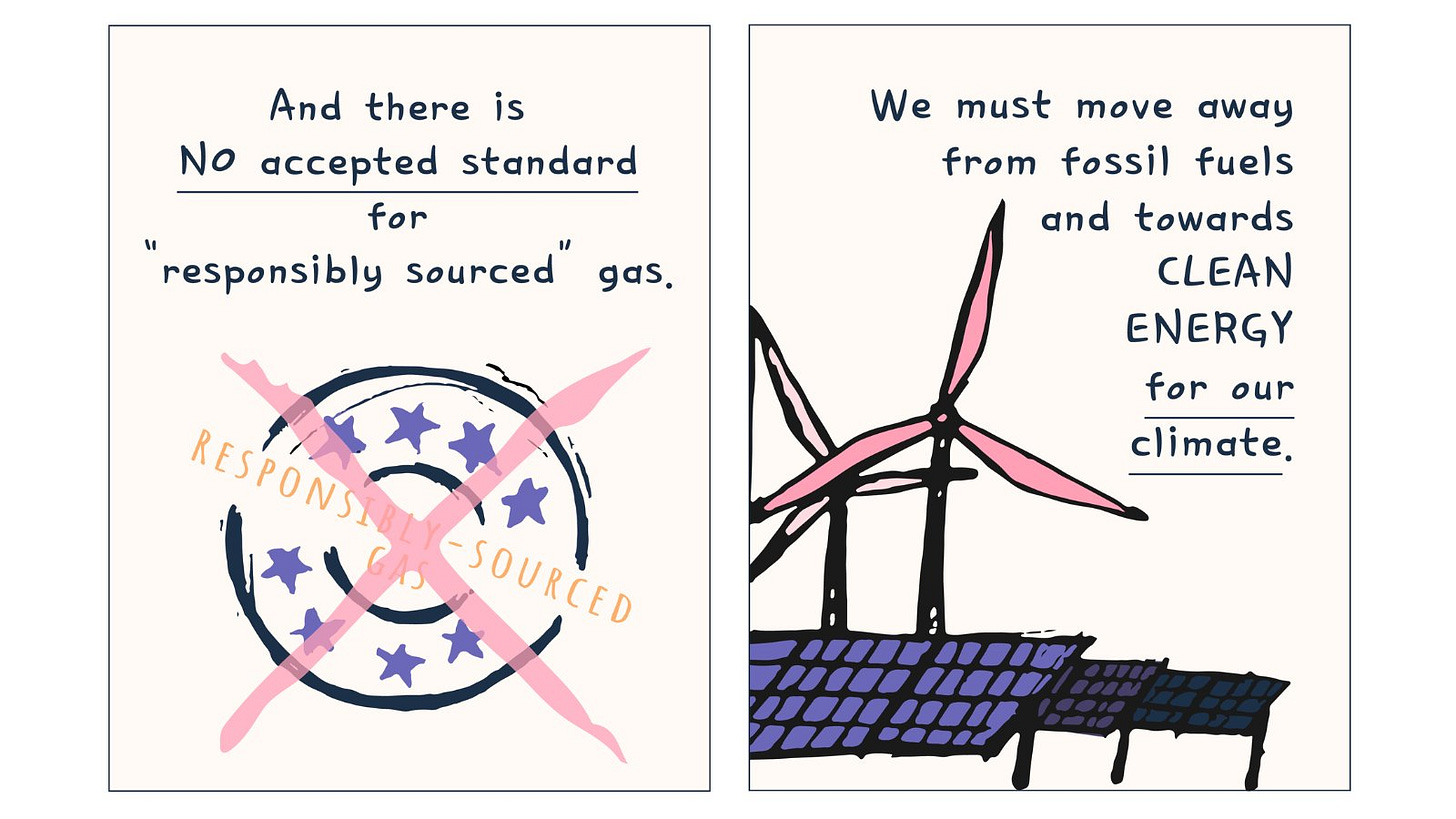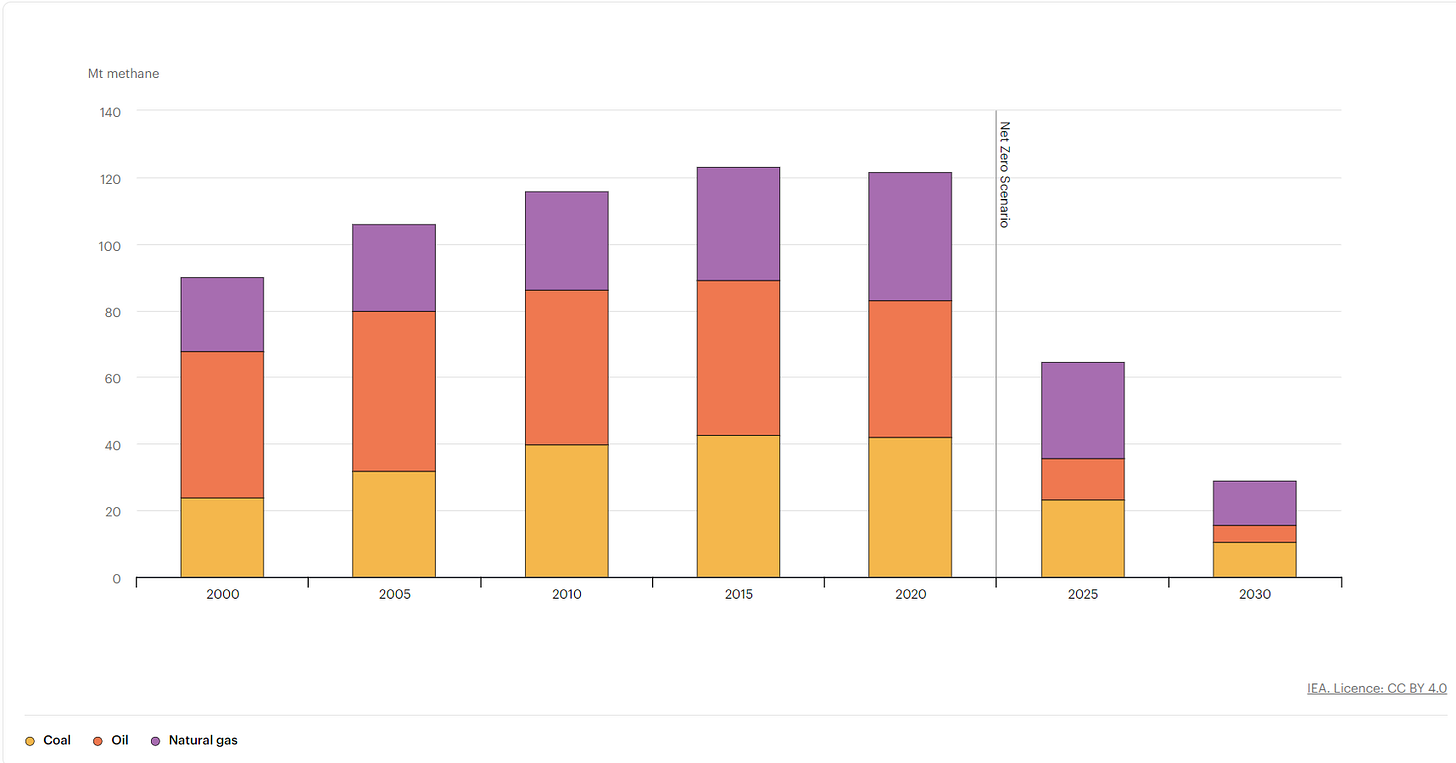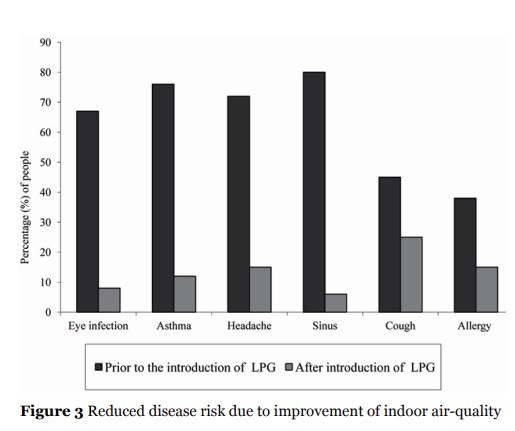Exposing the inconvenient truth about gas
Tarring all fossil fuels with the same brush might feel good, but it's problematic
“The world cannot be understood without numbers. But the world cannot be understood with numbers alone” - Hans Rosling
Liquefied natural gas (LNG) is natural gas that has been reduced to a liquid state. LNG has many functions, including heating our homes, cooking, and transport, but because methane is also polluting, many countries are trying to phase it out.
Last year, environmentalist Bill McKibben wrote an article for the New Yorker claiming that LNG is 274% worse for the climate than coal. McKibben knowingly shared this figure, which came from research from Robert W Howarth, an academic at Cornell University, while acknowledging that the paper had not yet passed peer-review.
Within a couple of months, the New York Times referenced Haworth in an article, where it called LNG exports a “climate test”, stating that “A new analysis by Robert Howarth…concluded that the emissions associated with exporting natural gas could be 24 percent to 274 percent greater than those associated with burning coal. Citing that study, which has not yet been published in a scientific journal…”
Somewhat quietly following the peer review process, Howarth’s paper was revised to remove the 274% figure. None of the media outlets that reported the original figure have since corrected it.
However, the figure is largely irrelevant. What this example illustrates is just how fast and keen journalists were to jump on the 274% figure because it confirmed their feelings (confirmation bias) that all fossil fuels are bad, so of course, gas must be as bad for the environment as coal.

Although Howarth declares no conflict of interest in his paper, he notes receiving funding from the Park Foundation, an activist organisation that declares part of its environmental mission to be: “to challenge continued shale gas extraction and infrastructure expansion.”
The Park Foundation is an influential organisation: in 2022 alone it awarded 409 grants, totalling just over $29M to various campaign organisations and universities.
Although the paper was widely reported on before passing peer review, its significance is not to be underestimated. Following McKibben’s article citing the 274% figure, seven Senate Democrats wrote a letter arguing against LNG exports and branding LNG as “greenwashing”.
They wrote: “Studies measuring methane leakage have concluded that “[i]f gas leaks, even a little, ‘it’s as bad as coal.’” The citation for this that is given in their letter is not a study, but a New York Times article, which in turn references a paper on gas leaks stating that “Robert Howarth, an earth systems scientist at Cornell University who raised the alarm about methane leaks more than a decade ago, called the analysis solid”, which in turn links to another article in the NY Times from 2011 which argues that gas is as bad as coal. This article has a correction at the end that states: “An earlier version of this article misstated the amount of carbon dioxide produced by burning natural gas, relative to oil. Gas emits about 30 percent less carbon dioxide than oil, not 30 percent as much as oil.”
Also cited as a reference by the Senators is the activist organisation Price of Oil, which claims to be data-driven but publishes many misleading articles about nuclear energy and promotes only ‘renewables’ as clean energy. Price of Oil called the United Arab Emirates “A Nuclear-Tainted and Oil-Soaked Renewable Energy Agency” when the country dared to host discussions on ‘renewable’ energy, and it attacks pro-nuclear environmentalists as “nuclear spin doctors”, arguing that “The trouble is the nuclear industry has got the environmental movement splitting down the middle. And that is another classic PR tactic: divide and conquer.” This organisation’s unfounded ad hominem attacks (the shill gambit) indicate that it should not be trusted to influence public policy.
Other activists took up the anti-LNG messaging, particularly on TikTok and Instagram. They also delivered petitions to the Biden administration, met with senior White House climate officials to urge Biden to reject LPG, and Jane Fonda recorded a video for Greenpeace, urging the public to fight against gas and oil expansion.
The scientific consensus
Just as traditional environmentalists have ignored the scientific consensus of mitigation of climate change requiring nuclear energy, they have also ignored the role of gas in the energy transition. The Intergovernmental Panel on Climate Change (IPCC) concludes that: “The main mitigation options in the energy supply sector are energy efficiency improvements, the reduction of fugitive non-CO2 GHG emissions, switching from (unabated) fossil fuels with high specific GHG emissions (e.g., coal) to those with lower ones (e.g., natural gas), use of renewable energy, use of nuclear energy, and carbon dioxide capture and storage (CCS).”
According to Our World in Data, “Coal, again, is the dirtiest fuel. It emits much more greenhouse gases than other sources – hundreds of times more than nuclear, solar, and wind… Oil and gas are also much worse than nuclear and renewables but to a lesser extent than coal… [I]t's important to look at the role of coal, oil, and gas individually – their impacts are not equal.”
The International Energy Agency (IEA) published a chart showing how different regions of the world have seen CO2 emissions savings from their coal-to-gas transitions. The IEA summarises: “Since 2010, coal-to-gas switching has saved around 500 million tonnes of CO2 - an effect equivalent to putting an extra 200 million EVs running on zero-carbon electricity on the road over the same period.”
Regarding methane, the IEA focuses on taking measures to reduce methane emissions from gas, rather than giving up on the fuel altogether. This is a solvable problem, and it is still more of an issue with coal than with gas.
As well, coal mines have been found to emit more methane than gas and oil, which shows how important it is to factor in all of the variables, and to consider all energy sources in context. Yet the aforementioned paper by Howarth, which has been credited with influencing national policy on LNG in the US, does not do this. The reality is that all sources of energy generation have an environmental cost, and if this is the primary concern, then nuclear energy should be the end goal due to the fact that it is low-carbon, requires the least amount of resources, and has the smallest land footprint. Yet McKibben has spent years objecting to nuclear energy and promoting only ‘renewables’ to phase out fossil fuels.
The need for nuance
Liquefied petroleum gas (LPG), is a hydrocarbon gas that exists in a liquefied form, mainly propane and butane alone or in mixtures in liquid form under pressure. LPG is a much cleaner fuel for cooking for those who live in energy poverty - millions of women have been protected from serious health issues by transitioning to LPG cooking stoves, which are one of the cleanest and most scalable solutions for those in poor countries.
Using cooking fuels like wood, charcoal, and cow dung hurts women and girls in poorer nations the most, as they are responsible for most of the cooking. Women are more likely to develop health conditions related to indoor air pollution, and they also lose time, security, and income because they have to gather fuel, while girls miss out on having an education because they have to collect wood or cow dung for fuel.
I’ve spent years arguing that we should phase out fossil fuels, and while I still believe we should do this in the long run (because nuclear energy is, frankly, superior in every way), I have also fallen for the activist messaging (which is more widespread than you may realise) that lumps all fossil fuels together. But gas, oil, and coal were not created equally. As catchy as the slogans may be, stopping oil overnight would cause immense harm, and for poorer countries to wean off of coal and improve air quality and human health, they need gas as a bridge fuel.
Also, research involving a randomised controlled trial found that in villages with new LPG stoves, there was a 40% reduction in the number of children who suffered burns.
A study that examined the effects of a transition from fuelwood to LPG in the Himalaya region in India that was completely dependent on forest biomass as a source of fuel found that:
“LPG substitution has brought down both the time and energy requirements substantially with regard to fuelwood collection, enabling people to use their time for other activities. It also has brought about better health outcomes by bringing down the incidence of diseases due to indoor air pollution.” The paper calls for government subsidies on LPG to aid citizens with energy conservation and forest conservation, as the Himalaya is one of the world's biodiversity hotspots.
The irony is that, according to the study, biomass is one of the main problems:
“Of those 28 million cookstoves, only 8.2 million — the ones that run on electricity or burn liquid fuels including liquefied petroleum gas (LPG), ethanol and biogas — meet the health guidelines for indoor emissions set by the WHO. The vast majority of the stoves burn wood, charcoal, animal dung or agricultural waste — and aren’t, therefore, nearly as healthy as promised. Although these cookstoves produce fewer emissions than open fires, burning biomass fuels in them still releases plenty of toxins.”
Yet biomass is classed as renewable, while environmental activists argue that gas is the dirty fuel. This is even though research has found that greenhouse gas emissions per unit of electricity generated from biomass can be higher than those from fossil fuels like coal or gas.
Energy and environmental conservation
The problem with phasing out gas without replacements in place is that it can harm those in low-income countries where they need LNG to stay alive. For example, during the energy crisis, India and Brazil were unable to afford enough gas to fully power their economies, which led to blackouts in Bangladesh and Pakistan. LNG imports went to the richer countries that could afford them instead.
Although numbers vary on precisely how much methane LNG emits, and the final figures depend on many variables, reducing these emissions is a solvable problem. Meanwhile, gas does not emit soot, dust, or particulates, and low- and middle-income countries need it to transition away from more polluting fuels. While many activists will argue that gas is bad for the environment, the same argument can be made for biomass. Gas needs to be considered in context, as in lower-income countries it is essential for displacing coal from the grid, as well as replacing the fuel for cooking stoves that harm human health. If we also consider that key forests need protection from being used as these fuels, the environmental argument for gas becomes clearer, however uncomfortable it may make people feel because it is a fossil fuel.
When wealthy nations make decisions to reduce the energy resources they have at home, they usually end up taking imports destined for poorer nations (like Germany, after shutting down all of their nuclear power plants), and the consequence is that the rich get to stay energy-rich, and the poor are forced to stay energy-poor. These countries should instead focus on building clean energy at home, since they want to phase out fossil fuels, which some countries are already achieving by building nuclear power plants.
The inconvenient truth that many journalists, academics, and activists seem unwilling to accept is that the solution to climate change is not a simplistic global blanket ban on fossil fuels, but the acceptance that some countries need gas as a bridge fuel to both protect the planet and the poorest people on it. Therefore, to improve the lives of billions of people as well as the environment, it’s just as essential that we dispel the hot air around discussions of gas.








Great article, thank you for posting.
Thank you for all you do to spread the true facts on energy and electricity generation. I had not heard of the Parks Foundation before. Just another of many NGO's that are very influential, tax sheltered and free to publish whatever rubbish they wish. My take is that the "Freedom to publish" in America is being used against the best interests of America and the free western world. The Sierra Club, NRDC, Parks Foundation and hundreds of other extremist organizations have (my guess) more dollars (Capital Research and others estimate well over $2 Billion) to spend on public indoctrination than a major Fortune 500 company. And spend on what....destroying the free world. Keep up your good and important work!